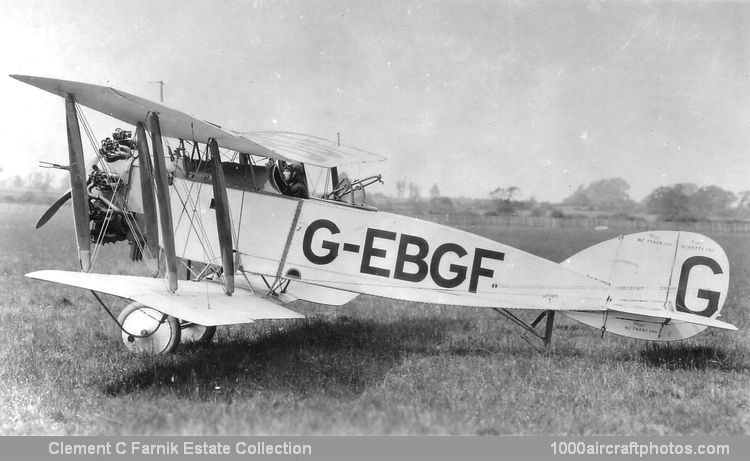10/31/2009. Remarks by Johan Visschedijk: "Bristol developed the Jupiter Fighter from their well-known F.2B fighter by fitting a 425 hp Bristol Jupiter IV nine-cylinder radial engine and an oleo-type landing gear, and three aircraft were produced.
Registered G-EBGF on May 3, 1923, the first was flown the following month, followed by G-EBHG (c/n 6380) and G-EBHH (c/n 6381) in July. Despite appearance at several shows no orders came forward, while on November 23, G-EBHG crashed due to an engine failure.
Searching for a standard engine the Swedish government selected the Bristol Jupiter and Armstrong Whitworth Jaguar engines. G-EBHG, the second aircraft, redesignated Type 76B, was delivered to Sweden in November 1923 as a test bed. Accompanied by an Armstrong Whitworth Siskin Mk IIA (G-EBHY c/n A.W.11, fitted with a Jaguar engine), it was sent to Kiruna, north of the Arctic Circle, for winter trials.
Both aircraft were acquired by Sweden in May 1924 and the Bristol 76B entered service with Flygkompaniet (Army Air Corps) with s/n 4300. When the Flygkompaniet became Flygvapnet (Air Force) on January 6, 1926, the aircraft received the military designation Ö6 and the s/n changed to 667. It was declared surplus on March 16, 1934 and subsequently sold. It was registered to Hugo Fredrikzon of Malmslätt as SE-AEE on February 14, 1935. It crashed near Göteborg on October 30, 1936.
G-EBHH, the third aircraft, was converted to a dual-control trainer in September 1924, and redesignated Type 89."
